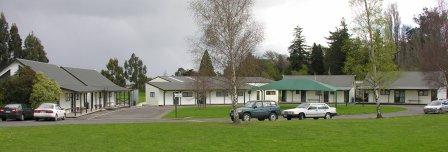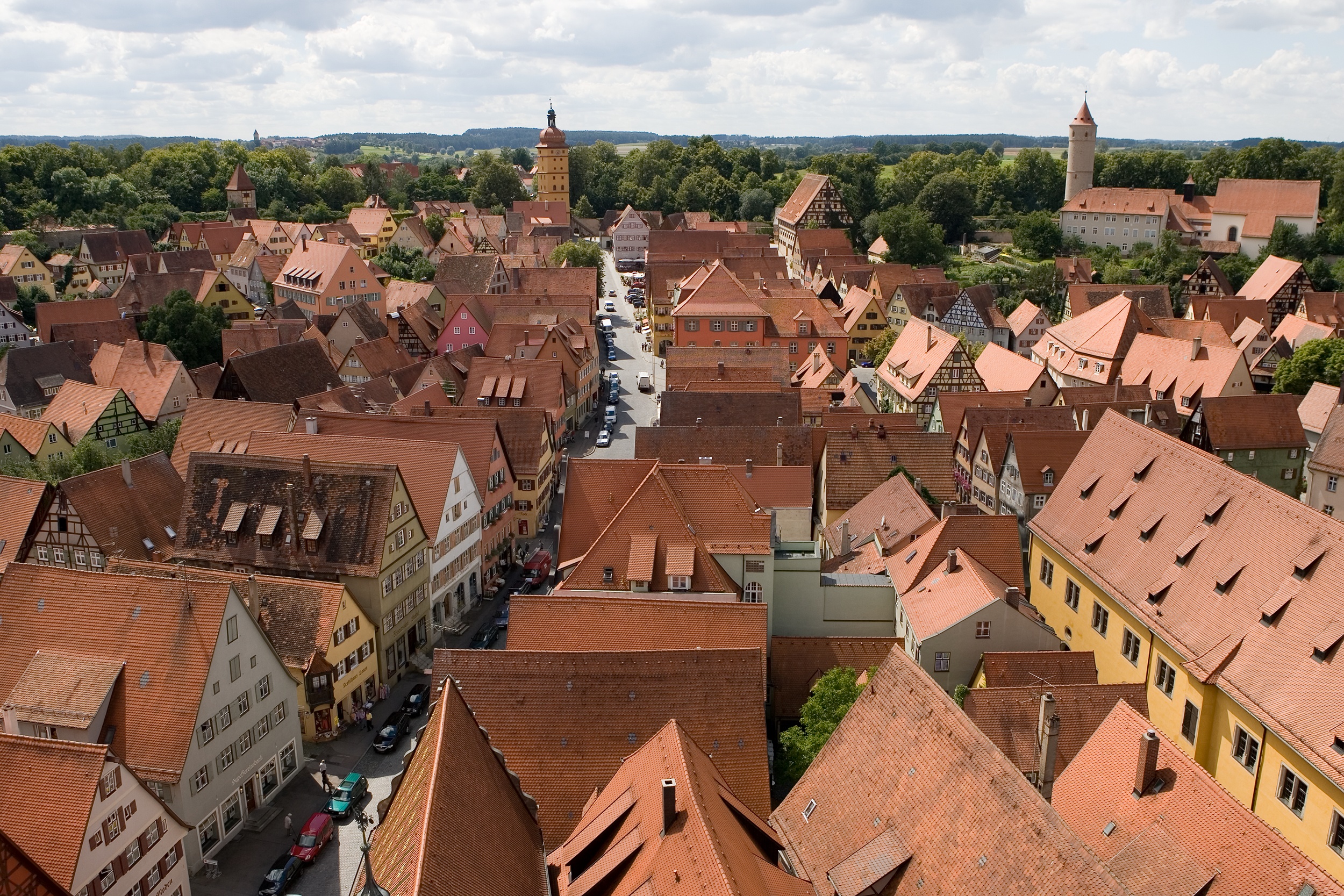|
Dannevirke Railway Station
Dannevirke railway station on the Palmerston North–Gisborne Line#Palmerston North - Napier section, Palmerston North–Gisborne line of the North Island of New Zealand opened in 1884 to serve the expanding town of Dannevirke, Danevirke. It is from Napier railway station, New Zealand, Napier and from Palmerston North railway station, Palmerston North Junction. Its last regular passenger train was the Bay Express on 7 October 2001. It is occasionally used by excursion trains. History Early settlers split railway sleepers, creating a long, by about high, row on the road side, so that the town was called "sleepertown". On 8 June 1883 Jay and Haynes took on a £13,615 contract to build the extension south from Matamau#Extension south, Matamau to Tahoraite (now Tapuata railway station, Tapuata). By February 1884 they realised that they had underestimated construction costs and the work was taken on by the Ministry of Works and Development, Public Works Department. Danevirke o ... [...More Info...] [...Related Items...] OR: [Wikipedia] [Google] [Baidu] |
KiwiRail
KiwiRail Holdings Limited is a New Zealand state-owned enterprise (SOE) responsible for rail operations in New Zealand and operates inter-island ferries. Trading as KiwiRail and headquartered at 604 Great South Road, Ellerslie, New Zealand, Ellerslie, KiwiRail is the largest Rail transport in New Zealand, rail transport operator in New Zealand. KiwiRail has business units of KiwiRail Freight, Great Journeys New Zealand and Interislander. The company was formed in 2008 when the government renationalised above-rail operations (having previously renationalised the network in 2004) and inter-island ferry operations, then owned by Toll Holdings. In 2021, the government launched the New Zealand Rail Plan, with funding for rail projects to come from the National Land Transport Fund (NLTF), and with KiwiRail remaining an SOE but paying Track Access Charges (TACs) to use the network. History Background Prior to the establishment of KiwiRail, rail transport in New Zealand has been under ... [...More Info...] [...Related Items...] OR: [Wikipedia] [Google] [Baidu] |
George Troup (architect)
Sir George Alexander Troup (21 October 1863 – 4 October 1941) was a New Zealand architect, engineer, and statesman. He was nicknamed "Gingerbread George" after his most famous design, the Dunedin Railway Station in the Flemish Renaissance style (he preferred his alternative design in the Scottish Baronial style). He was the first official architect of the New Zealand Railways. He designed many other stations, including Lower Hutt and Petone. Early life and education He was born in London, England. His family returned to Edinburgh, Scotland soon after he was born. His widowed mother sent him to Robert Gordon's College, Aberdeen, where he was entitled to free board and tuition as the son of an Aberdeen burgess. He trained as an architect and engineer under C.E. Calvert in Edinburgh, and in 1882 was employed as a draughtsman by architect J.J.A. Chesser. Career He immigrated to New Zealand in 1884. Joining the Survey Department when he arrived in Dunedin, he worked in remote ... [...More Info...] [...Related Items...] OR: [Wikipedia] [Google] [Baidu] |
Handcar
A handcar (also known as a pump trolley, pump car, rail push trolley, push-trolley, jigger, Kalamazoo, velocipede, gandy dancer cart, platelayers' cart, draisine, or railbike) is a railroad car powered by its passengers or by people pushing the car from behind. It is mostly used as a railway maintenance of way or mining car, but it was also used for passenger service in some cases. Design and function A typical design consists of an arm, called the walking beam, that pivots seesaw-like on a base, which the passengers alternately push down and pull up to move the car. An even simpler design is pushed by two or four people (called trolleymen), with hand brakes to stop the trolley. When the trolley slows down, two trolleymen jump off the trolley and push it till it picks up speed. Then they jump into the trolley again, and the cycle continues. The trolleymen take turns in pushing the trolley to maintain the speed and avoid fatigue. Four people also required to safely lift the t ... [...More Info...] [...Related Items...] OR: [Wikipedia] [Google] [Baidu] |
NZR RM Class (88 Seater)
The NZR RM class 88-Seaters were a class of railcar used in New Zealand. New Zealand Government Railways (NZR) classified them as RM (Rail Motor), the notation used for all railcars, numbering the 35 sets from RM100 to RM134. They were the most numerous railcars in NZR service. Their purchase and introduction saw the demise of steam-hauled provincial passenger trains and mixed trains, and was part of a deliberate effort to modernise NZR passenger services at a time of increasing competition from private motor vehicles. Being diesel powered and lighter the railcars were less expensive to operate and able to maintain quicker timetables, although they became plagued with mechanical and electrical problems, with a number of the classes eventually being turned into depowered locomotive-hauled carriages and reclassified as the AC class "Grassgrubs". Background In the early 1950s, NZR was in the process of replacing steam traction with diesel and modernising the railways to cope wit ... [...More Info...] [...Related Items...] OR: [Wikipedia] [Google] [Baidu] |
Dannevirke Railway Station Canopy, New Zealand 02
Dannevirke ( "work of the Danes", a reference to Danevirke; or ''Tāmaki-nui-a-Rua'', the area where the town is) is a rural service town in the Manawatū-Whanganui region of the North Island, New Zealand. It is the main centre of the Tararua District. The surrounding area, a catchment and source of the Manawatū River (approximately 20 Min drive north of town) has developed into dairy, beef cattle and sheep farming, which now provides the major income for the town's population of . History Before European settlers arrived in the 1870s, the line of descent for Māori in the area was from the Kurahaupō waka. The tribe of the area is Rangitāne, with geographic distinction to Te Rangiwhakaewa in the immediate Dannevirke region. The first known 'Aotea' meeting house was established approximately 15 generations ago (from 2010) followed by the building of a marae at Makirikiri near Dannevirke at about the same time as the first Nordic settlers arrived from Napier and Hawkes B ... [...More Info...] [...Related Items...] OR: [Wikipedia] [Google] [Baidu] |
Gothic Revival Architecture
Gothic Revival (also referred to as Victorian Gothic or neo-Gothic) is an Architectural style, architectural movement that after a gradual build-up beginning in the second half of the 17th century became a widespread movement in the first half of the 19th century, mostly in England. Increasingly serious and learned admirers sought to revive medieval Gothic architecture, intending to complement or even supersede the Neoclassical architecture, neoclassical styles prevalent at the time. Gothic Revival draws upon features of medieval examples, including decorative patterns, finials, lancet windows, and hood moulds. By the middle of the 19th century, Gothic Revival had become the pre-eminent architectural style in the Western world, only to begin to fall out of fashion in the 1880s and early 1890s. For some in England, the Gothic Revival movement had roots that were intertwined with philosophical movements associated with Catholicism and a re-awakening of high church or Anglo-Cathol ... [...More Info...] [...Related Items...] OR: [Wikipedia] [Google] [Baidu] |
Roof Tiles
Roof tiles are overlapping tiles designed mainly to keep out precipitation such as rain or snow, and are traditionally made from locally available materials such as clay or slate. Later tiles have been made from materials such as concrete, glass, and plastic. Roof tiles can be affixed by screws or nail (fastener), nails, but in some cases historic designs utilize interlocking systems that are self-supporting. Tiles typically cover an List of commercially available roofing materials, underlayment system, which seals the roof against water intrusion. Categories There are numerous profiles, or patterns, of roof tile, which can be separated into categories based on their installation and design. Shingle / flat tiles One of the simplest designs of roof tile, these are simple overlapping slabs installed in the same manner as traditional roof shingle, shingles, usually held in place by nails or screws at their top. All forms of slate tile fall into this category. When installed, mos ... [...More Info...] [...Related Items...] OR: [Wikipedia] [Google] [Baidu] |
Charles Hall (New Zealand Politician)
Charles Hall (c. 1842 – 29 May 1937) was a Liberal Party Member of Parliament in New Zealand. He represented the Waipawa electorate from 1893 to 1896 when he was defeated, then from 1899 to 1911 when he retired. Biography Early life Hall was born at Malton, Yorkshire, in about 1842. His first wife, Eliza died in her youth leaving Hall a widower. They had one child, a daughter. Hall decided to shift to New Zealand and arrived at Napier in the ship ''Countess of Kintore'' in 1875 and entered the building trade upon arrival. Hall started up trade in Napier where he married Marian Dinsdale in 1878; the marriage issued two children one daughter and one son. He was keenly interested in land settlement and in 1880 took up a bush section in northern Manawatu. His family's home was destroyed in a bush fire and he and his family moved to Woodville where he again entered the building trade. Owing to his active interest in land settlement, Hall was appointed by the government to ser ... [...More Info...] [...Related Items...] OR: [Wikipedia] [Google] [Baidu] |
Joseph Ward
Sir Joseph George Ward, 1st Baronet, (26 April 1856 – 8 July 1930) was a New Zealand politician who served as the 17th prime minister of New Zealand from 1906 to 1912 and from 1928 to 1930. He was a dominant figure in the New Zealand Liberal Party, Liberal and United Party (New Zealand), United List of New Zealand ministries, ministries of the late 19th and early 20th centuries. Ward was born into an Irish Catholic family in Melbourne, Victoria. In 1863, financial hardship forced his family to move to New Zealand, where he completed his education. Ward established a successful grain trade in Invercargill in 1877 and soon became prominent in local politics. He became a Member of Parliament in 1887. Following the election of the Liberal Government of New Zealand, Liberal Government in 1891, Ward was appointed as Postmaster-General (New Zealand), Postmaster-General under John Ballance; he was promoted to Minister of Finance (New Zealand), Minister of Finance in the succeeding ... [...More Info...] [...Related Items...] OR: [Wikipedia] [Google] [Baidu] |
Dannevirke 1903
Dannevirke ( "work of the Danes", a reference to Danevirke; or ''Tāmaki-nui-a-Rua'', the area where the town is) is a rural service town in the Manawatū-Whanganui region of the North Island, New Zealand. It is the main centre of the Tararua District. The surrounding area, a catchment and source of the Manawatū River (approximately 20 Min drive north of town) has developed into dairy, beef cattle and sheep farming, which now provides the major income for the town's population of . History Before European settlers arrived in the 1870s, the line of descent for Māori in the area was from the Kurahaupō waka. The tribe of the area is Rangitāne, with geographic distinction to Te Rangiwhakaewa in the immediate Dannevirke region. The first known 'Aotea' meeting house was established approximately 15 generations ago (from 2010) followed by the building of a marae at Makirikiri near Dannevirke at about the same time as the first Nordic settlers arrived from Napier and Hawkes B ... [...More Info...] [...Related Items...] OR: [Wikipedia] [Google] [Baidu] |
Railways Department's Housing Scheme
The Railways Department's Housing Scheme refers to a housing programme undertaken by the New Zealand Railways Department (also known as NZR or New Zealand Government Railways) during the 1920s. The scheme was intended to provide railway workers and their families with affordable and accessible accommodation during a time when it was otherwise difficult to find suitable housing. Although the houses were generally only intended as section houses, specifically for workers of the Railways Department, some houses were provided for the general population - such as those in Lower Hutt. The construction scheme was in effect between 1923 and 1929 and saw the construction of over 1,500 prefabricated houses throughout New Zealand. History Background NZR had provided housing of some sort for its workforce since the 1880s. These were often huts for the workers and small cottages for higher-ranking officials such as station masters. Privately operated railways New Zealand Midland Ra ... [...More Info...] [...Related Items...] OR: [Wikipedia] [Google] [Baidu] |








